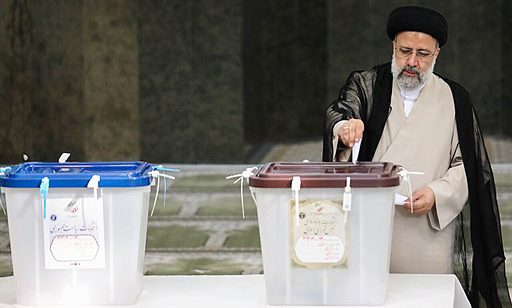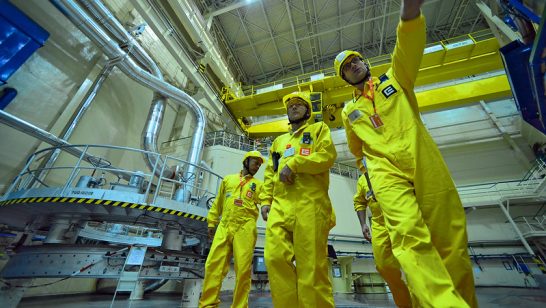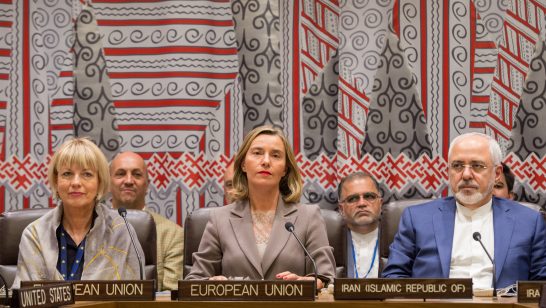
As the Biden administration and incoming Raisi government are set to try to find common ground to re-implement the Joint Comprehensive Plan of Action (JCPOA), the time is now ripe to reflect on the roughly 12-year negotiation history and 6-year implementation experience of the Iran nuclear deal and consider what comes next for the Middle East. A group of experts recently identified what aspects of the JCPOA regional states may want to consider in broader regional or sub-regional structures, while avoiding its mistakes.
US-Iran talks come at a critical juncture in the history of the Middle East, potentially stabilizing tensions between the two sides by getting them to fully meet their commitments. This requires that the US return to the JCPOA and drop some of the sanctions adopted by the Trump administration, and that Iran returns to full compliance with the agreement’s nuclear restrictions. Yet even if the JCPOA is fully re-implemented, significant concerns will remain on both sides. Iran has no assurance a future US administration will not once again abandon its commitments and reimpose sanctions, and continues to eye with apprehension the US-backed arms buildup by regional states. Meanwhile, the United States and its allies have expressed a desire to strengthen and lengthen the JCPOA, including by extending sunset clauses and addressing concerns around Iranian missiles and proxies.
Meanwhile, the region’s security architecture is in flux and conflicts abound. The US is steadily reducing its troop presence in the Middle East as part of its much-vaunted but long-delayed efforts to end the so-called “forever wars” and pivot to Asia. And the US-allied bloc, Iran’s “Axis of Resistance”, and the Turkish-Qatari partnership find themselves arrayed against one another and a non-state Salafi-Jihadi movement in areas of tension across the region. Several of them possess – or have the capacity to build – WMD, and states and non-state actors across the region have used chemical weapons.
At the same time, the Abraham Accords and budding Iran-Saudi talks show signs that the states of the region may be prepared to take steps toward reconciliation and greater responsibility for collective security through cooperation and dialogue. An example includes ceasefire offer and talks in Yemen. In this context, the experience of negotiating and implementing the JCPOA could hold important lessons for how states in the region might address issues of arms control and regional security.
Middle Eastern states could adopt some elements of the Iran nuclear deal. Some measures highlighted in a United Nations Institute for Disarmament Research study include: the adoption of at the least the JCPOA’s prohibition on plutonium reprocessing on a regional basis, the list of prohibited activities needed to “weaponize” nuclear material in Annex T, and the IAEA’s Additional Protocol to enhance monitoring, safeguards, and verification of the region’s budding civil nuclear programs. This could be done in various ways: unilaterally, sub-regionally (as recently suggested by the NYT Editorial Board), or regionally.
Regional policymakers may also want to emulate or adapt certain structural elements of the Iran deal. For example, they could create a body responsible for the implementation and dispute resolution of any agreed measures like the Joint Commission, the body assigned by the JCPOA to oversee its implementation. This has become a venue where all participants can meet, despite the lack of official diplomatic relations between some of them, and address disagreements in a diplomatic setting. The creation of such a body as part of a Middle East arms control or regional security process could become a regular forum for regional states to meet, share information, cooperate, and build trust. Such structures are not unique to the JCPOA and have proved useful in other regions and agreements.
Middle Eastern states will want to avoid aspects of the JCPOA that cannot be replicated in other agreements, were not sufficiently elaborated, or are undesirable. For example, the P5+1–Iran negotiations featured a vast power disparity, resulting in world powers and Iran undertaking very different obligations and restrictions. Any future Middle East arms control and regional security talks will be concluded on a more or less equal footing where all regional states will be adopting the same obligations. In the regional context, the main incentive for states to participate and accept restrictions on their activities will be to obtain the security benefits of ensuring those same restrictions would also be placed on their neighbors.
The JCPOA also encountered challenges verifying past and present WMD weaponization activities, a factor decision-makers may have to confront in any future WMD-related talks, such as the ongoing negotiations on the Middle East WMD-Free Zone. Another area where challenges have become apparent is the sanctions snapback procedure in United Nations Security Council Resolution 2231 which, if activated by a JCPOA participant, would reimpose international and national sanctions on Iran. While this set out consequences for a major Iranian violation, no procedure existed to enforce major commitments by other JCPOA participants. Furthermore, the snapback procedure was intended to address major violations, leaving a large set of activities below this threshold with no means of enforcement.
Lastly, the JCPOA’s narrow focus on the Iranian nuclear program was a key reason for its successful negotiation but proved insufficient to sustain it. A negotiated resolution to the Middle East’s trust and security deficits and conflicts will require states to address a host of complex issues simultaneously, if not necessarily all in the same fora or in one shot. This will require political will, creativity, and the right balance of incentives to create a common regional security vision.
Looking ahead, as European states and the EU are perceived to be among the more neutral in the international system, they can also play an intermediary role between Middle Eastern states. Farzan Sabet and Chen Zak
European states and institutions have already substantively contributed to these processes by playing a direct and intermediary role in trying to keep the JCPOA alive and being actively involved in regional security initiatives such as the Barcelona Process and the Euro-Mediterranean Partnership, as well as funding initiatives like the Middle East WMD-Free Zone project at UNIDIR, among a host of other actions. Looking ahead, as European states and the EU are perceived to be among the more neutral in the international system, they can also play an intermediary role between Middle Eastern states where their good offices are required. In the meantime, they should also ensure they are not actively contributing to ongoing regional conflicts and divisions.
The views expressed by the authors do not necessarily reflect the views or opinions of the United Nations, UNIDIR, its staff members or sponsors.
The opinions articulated above represent the views of the author(s) and do not necessarily reflect the position of the European Leadership Network or any of its members. The ELN’s aim is to encourage debates that will help develop Europe’s capacity to address the pressing foreign, defence, and security policy challenges of our time.
Image: Wikimedia commons




